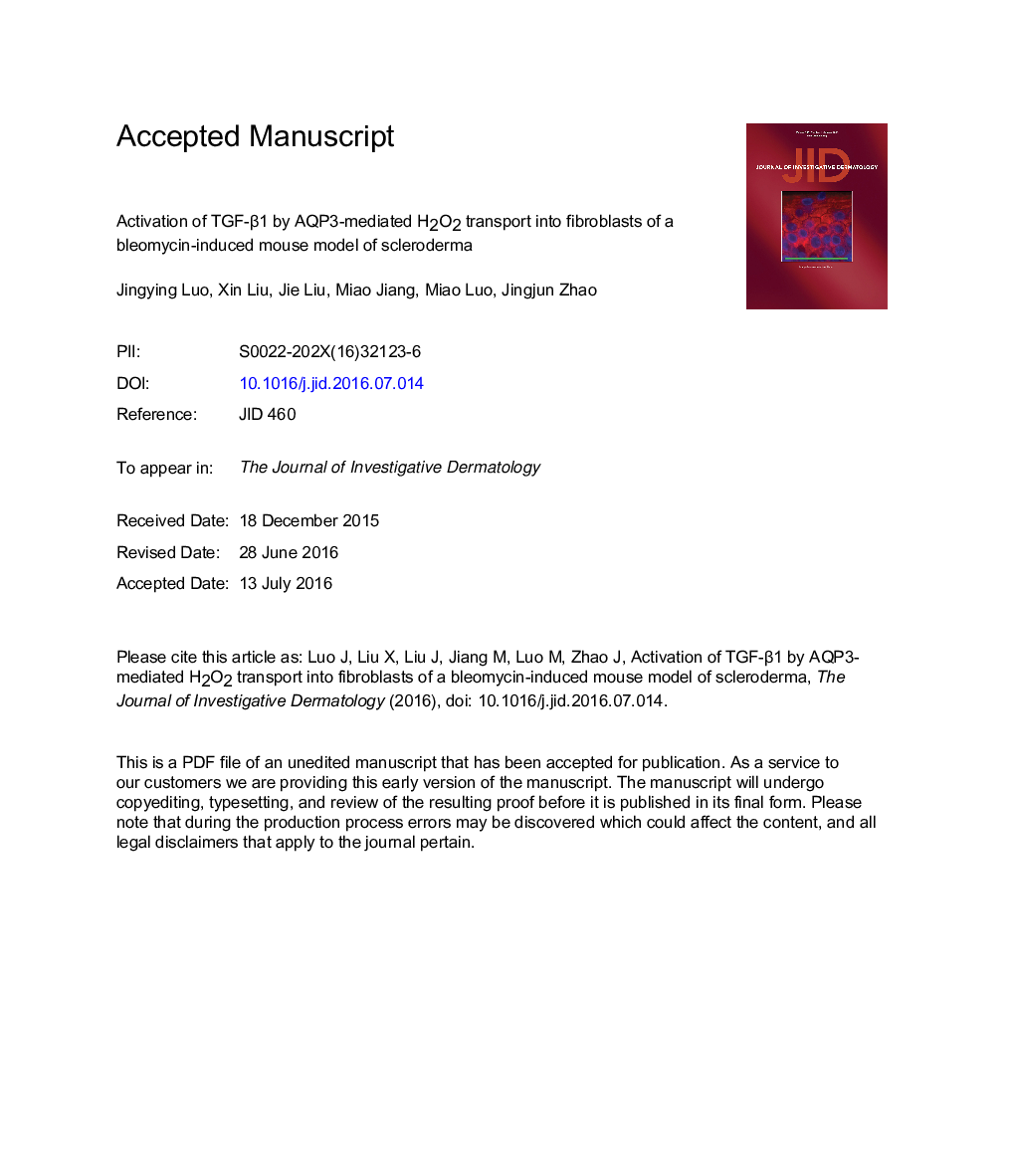| Article ID | Journal | Published Year | Pages | File Type |
|---|---|---|---|---|
| 5649459 | Journal of Investigative Dermatology | 2016 | 29 Pages |
Abstract
Hydrogen peroxide (H2O2), the most important reactive oxygen species, mediates intracellular signal transmission and is transported into cells by aquaporin 3 (AQP3). However, it remains unclear whether AQP3 is involved in the pathogenesis of scleroderma. In this study, we examined the role of AQP3 in a bleomycin-induced mouse model of scleroderma. We observed that H2O2 and AQP3 levels in mouse skin increased with the bleomycin injection period relative to phosphate-buffered saline-injected control mice. AQP3 mRNA and protein levels were higher in bleomycin mice fibroblasts than in phosphate-buffered saline mice fibroblasts, and AQP3 immunofluorescence signals in the cytoplasm and cell membrane of bleomycin mice fibroblasts were much stronger than those in phosphate-buffered saline mice fibroblasts. Bleomycin-induced increases in H2O2, transforming growth factor-β1, collagen type I, and collagen type III levels in bleomycin mice fibroblasts were blocked by silencing AQP3. In addition, silencing AQP3 decreased H2O2 levels, transforming growth factor-β1 expression, and fibrosis in the scleroderma mouse model. These results demonstrate that AQP3-mediated transport of H2O2 into bleomycin mice fibroblasts activated transforming growth factor-β1, and silencing AQP3 is a potential approach for treating scleroderma.
Keywords
Related Topics
Health Sciences
Medicine and Dentistry
Dermatology
Authors
Jingying Luo, Xin Liu, Jie Liu, Miao Jiang, Miao Luo, Jingjun Zhao,
